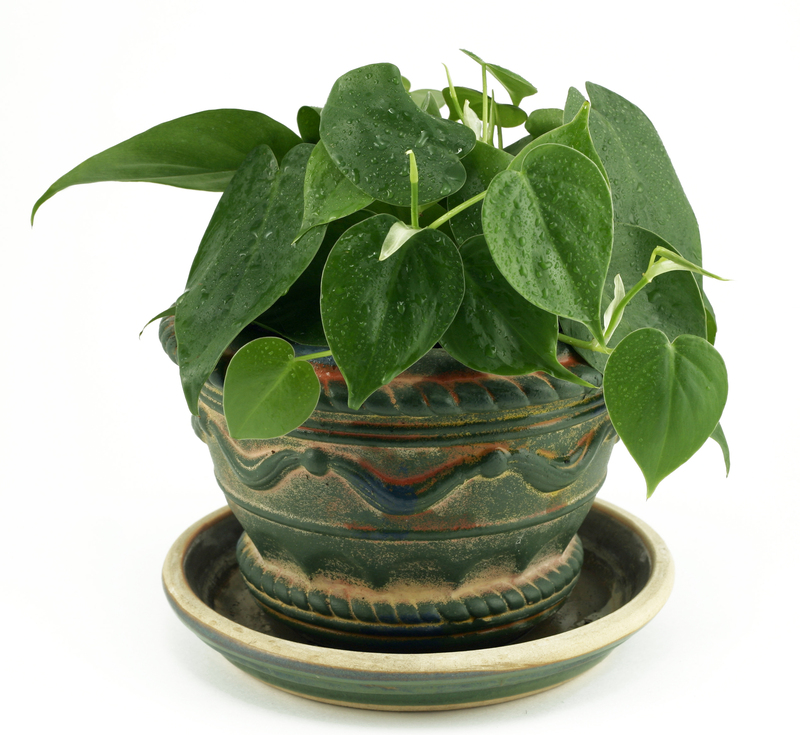Create a Serene Outdoor Sanctuary with Zen Garden Design
Posted on 01/09/2025

Create a Serene Outdoor Sanctuary with Zen Garden Design
Transforming your backyard or patio into a peaceful retreat is easier than you might think. Incorporating Zen garden design into your landscape can foster tranquility, mindfulness, and relaxation--right outside your door. In this comprehensive guide, discover how to create a serene outdoor sanctuary using Zen-inspired gardening practices and design principles that evoke calm and harmony.
- What is Zen Garden Design?
- The Benefits of Zen-Inspired Outdoor Spaces
- Foundational Principles of Zen Garden Design
- Step-by-Step Guide to Creating a Zen Garden
- Essential Elements for a Serene Zen Garden Sanctuary
- Best Plants and Materials for Zen Outdoor Spaces
- Maintaining Your Tranquil Zen Garden Retreat
- Expert Tips for Enhancing Outdoor Serenity
- Frequently Asked Questions
- Conclusion and Next Steps
What is Zen Garden Design?
Zen garden design, also known as Karesansui or Japanese rock garden, originated in Buddhist monasteries of Japan during the 14th century. Intended as a place for quiet meditation, these gardens use natural elements--stones, gravel, sand, moss, and minimal plant life--to symbolize the vast, peacefulness found in nature.
Unlike traditional lush gardens, Zen landscape design focuses on simple, balanced compositions and symbolic elements. The goal? To create an outdoor sanctuary that inspires mindfulness, reflection, and a sense of calm.
The Benefits of Zen-Inspired Outdoor Spaces
- Promotes relaxation and reduces stress by cultivating a tranquil environment.
- Encourages mindfulness and quiet contemplation.
- Enhances your landscape's aesthetic with simple, elegant beauty.
- Low-maintenance compared to traditional gardens--perfect for busy homeowners.
- Small spaces can easily be transformed into peaceful retreats.
- Boosts property value and appeal.
Foundational Principles of Zen Garden Design
To create an authentic, serene Zen outdoor sanctuary, it's helpful to understand the core principles behind Zen garden design:
1. Simplicity (Kanso)
Eliminate clutter--less is more. Opt for clear, empty spaces with minimal decor. Each item or feature should serve a purpose.
2. Naturalness (Shizen)
Emphasize organic forms and materials. Avoid symmetry and artificiality, using rocks, plants, and elements as they appear in nature.
3. Balance (Fukinsei)
Strive for asymmetry, as true harmony is found in natural imbalance. Place stones and plants unevenly for a more authentic look.
4. Subtlety (Yugen)
Let mystery remain. Choose understated elements and create spaces that hint at things beyond immediate view.
5. Tranquility (Seijaku)
All elements should contribute to the feeling of serenity and inner stillness. Avoid loud colors or busy patterns.
Step-by-Step Guide to Creating a Zen Garden
Step 1: Choose the Right Location
Select a quiet spot--sunny or shaded--as your future sanctuary. Small patios, backyard corners, or even a balcony can serve as the perfect setting for a Zen-inspired garden.
Step 2: Outline the Space
Mark out your garden's boundaries with stones, bamboo edging, or low hedges. The garden can be any shape: rectangular, irregular, or circular, as long as it fits your space comfortably.
Step 3: Prepare the Ground
- Remove grass, weeds, and debris.
- Level the soil and consider installing a weed barrier fabric for maintenance.
- Lay a base of compacted sand or soil for supporting your main features.
Step 4: Arrange Rocks and Stones
Large rocks represent mountains or islands in Zen symbolism. Group stones in odd numbers and nestle them deeply into the ground for a natural look.
- Position larger stones first--these serve as focal points.
- Surround them with smaller rocks or pebbles to mimic riverbanks or shorelines.
Step 5: Add Sand or Gravel
Rake sand or gravel in gentle, flowing patterns. These lines evoke water and movement, creating a soothing visual rhythm.
Step 6: Incorporate Natural Plantings
Use plants sparingly. Opt for moss, ferns, bamboo, or small evergreens. Keep arrangements simple and maintain ample open space.
Step 7: Introduce Water Elements (Optional)
Add a small fountain, koi pond, or stone basin--water brings sound and movement, enhancing the peaceful atmosphere.
Step 8: Place Finishing Touches
- Install a meditation bench or simple stone seat.
- Add lanterns or subtle lighting for evening enjoyment.
- Place stepping stones for a harmonious pathway.
Essential Elements for a Serene Zen Garden Sanctuary
To truly cultivate a peaceful outdoor sanctuary with Zen garden design, include these signature elements:
- Stones and Rocks - The bones of the garden; symbolize permanence and endurance.
- Gravel and Sand - Raked into patterns; represents water and movement.
- Moss and Minimal Plantings - Imparts a lush, understated touch; thrives in shaded areas.
- Water Features - Enhance meditation with gentle, soothing sounds.
- Natural Wooden Accents - Bamboo fences, bridges, or gates create rustic charm.
- Lanterns - Stone or metal, for subtle night-time illumination.
- Seating and Pathways - Benches, stepping stones, or gravel paths guide peaceful exploration.
Best Plants and Materials for Zen Outdoor Spaces
Recommended Plants
- Moss - Grows well in shade, softens stone edges, and symbolizes age and tranquility.
- Bamboo - Provides privacy, vertical interest, and gentle movement in the breeze.
- Japanese Maple (Acer palmatum) - Offers vibrant color in fall and delicate leaves.
- Ferns - Perfect for shady corners; add lush, feathery texture.
- Azaleas and Camellias - For a splash of seasonal color.
- Pine Trees - Symbolize resilience and longevity; choose dwarf or slow-growing varieties.
Key Materials
- River rocks, granite boulders, or slate for groupings and focal points.
- Fine gravel or sand for raked surfaces.
- Bamboo fencing or lattices for visual barriers and structure.
- Stone lanterns, water basins, and sculptures for authenticity.
Maintaining Your Tranquil Zen Garden Retreat
Keeping your Zen garden sanctuary pristine is simple with regular, mindful care.
- Rake gravel or sand regularly to refresh the pattern and remove debris.
- Weed carefully to keep the garden uncluttered and harmonious.
- Prune plants to encourage natural shapes and prevent overgrowth.
- Clean water features and refill as necessary; remove fallen leaves frequently.
- Repair and replace edging, stones, or bamboo as needed to sustain a tidy appearance.
Expert Tips for Enhancing Outdoor Serenity
- Use a monochrome palette - Stick to muted greens, grays, and natural stone for timeless appeal.
- Install a small wind chime for soothing sound without visual clutter.
- Position seating where you can view the garden from different angles for a fresh perspective.
- Add subtle lighting using lanterns, solar spotlights, or LED strips for night-time ambiance.
- Step out daily, even if just for a minute or two, to refresh your mind and connect with nature.
Frequently Asked Questions
Q: Can I create a Zen garden in a small space?
A: Absolutely! Zen-inspired outdoor sanctuaries work well in small patios, balconies, or even indoor spaces. Focus on a few key elements: stones, sand/gravel, and a simple plant arrangement.
Q: Do I need special tools for raking gravel?
A: You can use a traditional sand-raking rake available online or at garden centers. For DIY options, a wide-toothed wooden rake or even a forked stick will work for small projects.
Q: How do Zen gardens help with stress?
A: The act of tending to a Zen garden--raking, pruning, or simply observing--encourages mindfulness and deep breathing. The naturally calming design cues further promote relaxation, making your outdoor sanctuary an ideal stress-relief zone.
Conclusion and Next Steps: Embrace Serenity with Zen Garden Design
Cultivating a peaceful, serene outdoor sanctuary with Zen garden design is truly transformative. By focusing on natural elements, simplicity, and balance, you can create your own personal haven for meditation, relaxation, or simply enjoying a quiet moment in nature.
Ready to start? Assess your space, gather inspiration, and take the first step toward a more tranquil and harmonious outdoor lifestyle. For more tips and ideas on Zen-inspired gardens, bookmark this guide and revisit often as you nurture your sanctuary.


